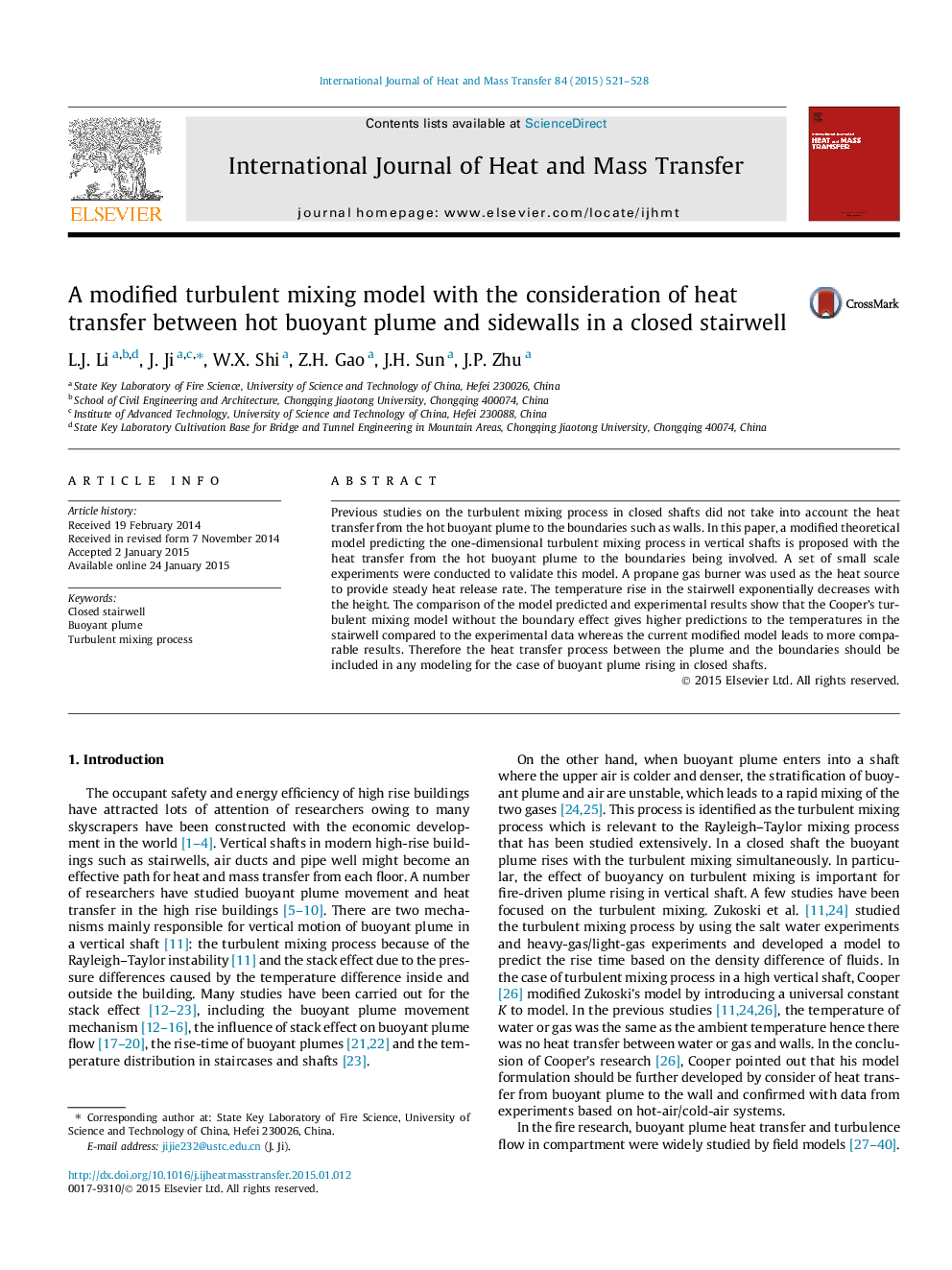| Article ID | Journal | Published Year | Pages | File Type |
|---|---|---|---|---|
| 656944 | International Journal of Heat and Mass Transfer | 2015 | 8 Pages |
Previous studies on the turbulent mixing process in closed shafts did not take into account the heat transfer from the hot buoyant plume to the boundaries such as walls. In this paper, a modified theoretical model predicting the one-dimensional turbulent mixing process in vertical shafts is proposed with the heat transfer from the hot buoyant plume to the boundaries being involved. A set of small scale experiments were conducted to validate this model. A propane gas burner was used as the heat source to provide steady heat release rate. The temperature rise in the stairwell exponentially decreases with the height. The comparison of the model predicted and experimental results show that the Cooper’s turbulent mixing model without the boundary effect gives higher predictions to the temperatures in the stairwell compared to the experimental data whereas the current modified model leads to more comparable results. Therefore the heat transfer process between the plume and the boundaries should be included in any modeling for the case of buoyant plume rising in closed shafts.
